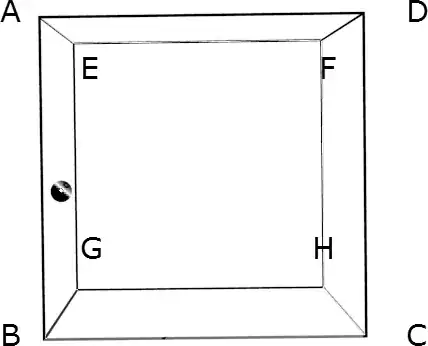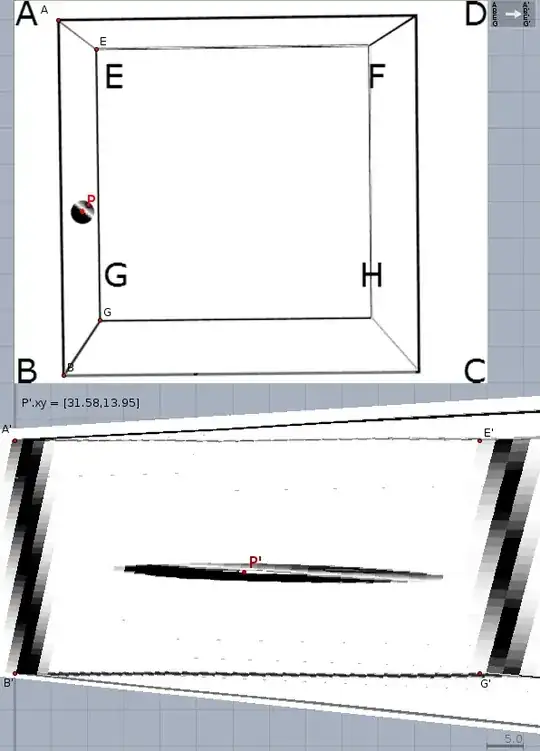
I have a box, with corners $A$ through $H$, as depicted above. I'll consider $B$ the origin of a coordinate system, with the $x$ axis in the direction through $C$, the $y$ axis through $A$ and the $z$ axis through $G$. The extent of the box in the $x$ and $y$ direction are $32$, the extent in the $z$ direction is $64$.
Now I have a ball in plane $EAGB$, with the white dot marking its center. I want to obtain the coordinates of that ball. How can I derive this from the information in the image?
I know how to give 3d coordinates for all the corner points, and I also know that the plane $EAGB$ is described by the equation $x=0$. Therefore the ball must have that same $x$ coordinate, and I have to find its $y$ and $z$ coordinates.
I also have the coordinates of the center on the white ball, projected onto the plane $ABCD$. These are $x=1.7, y=15$. I want the 2d vector of the white ball on plane $EAGB$.
